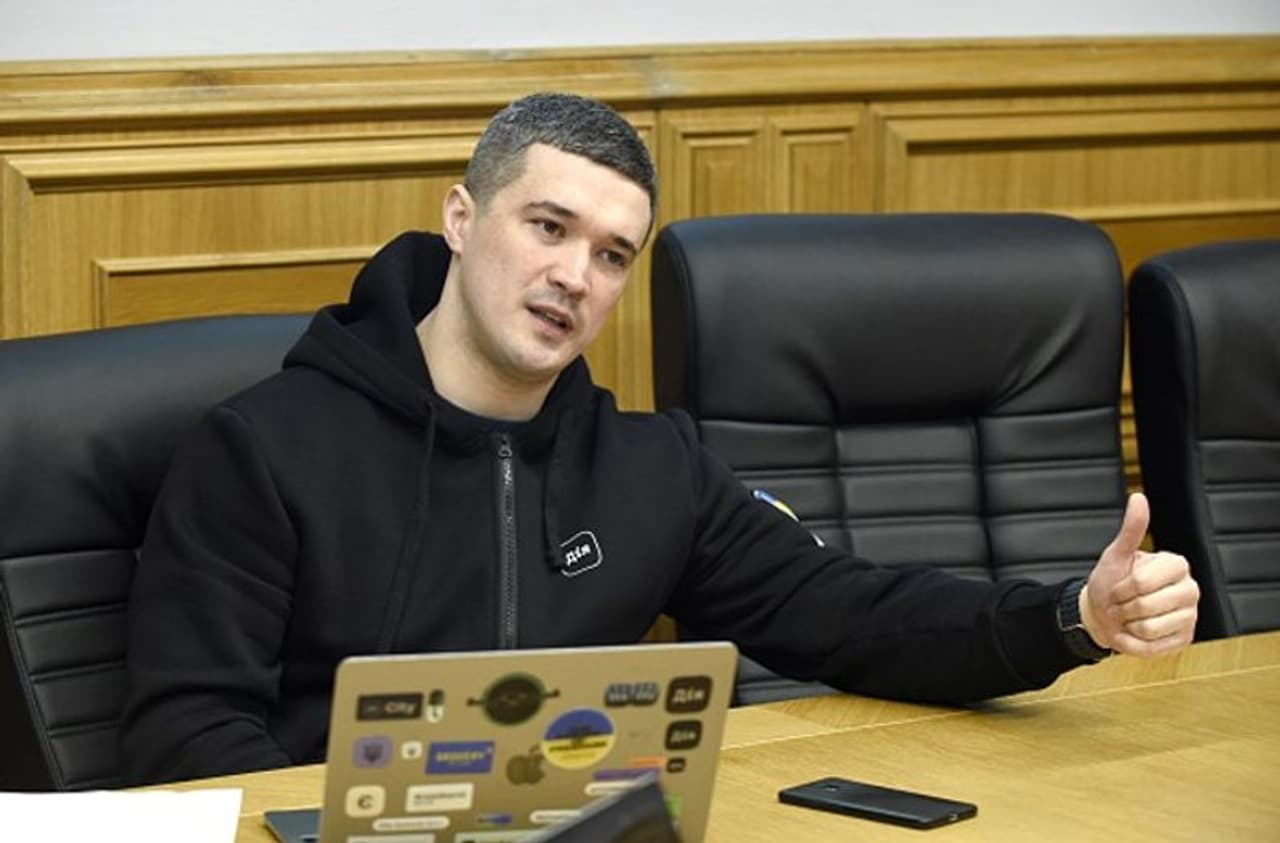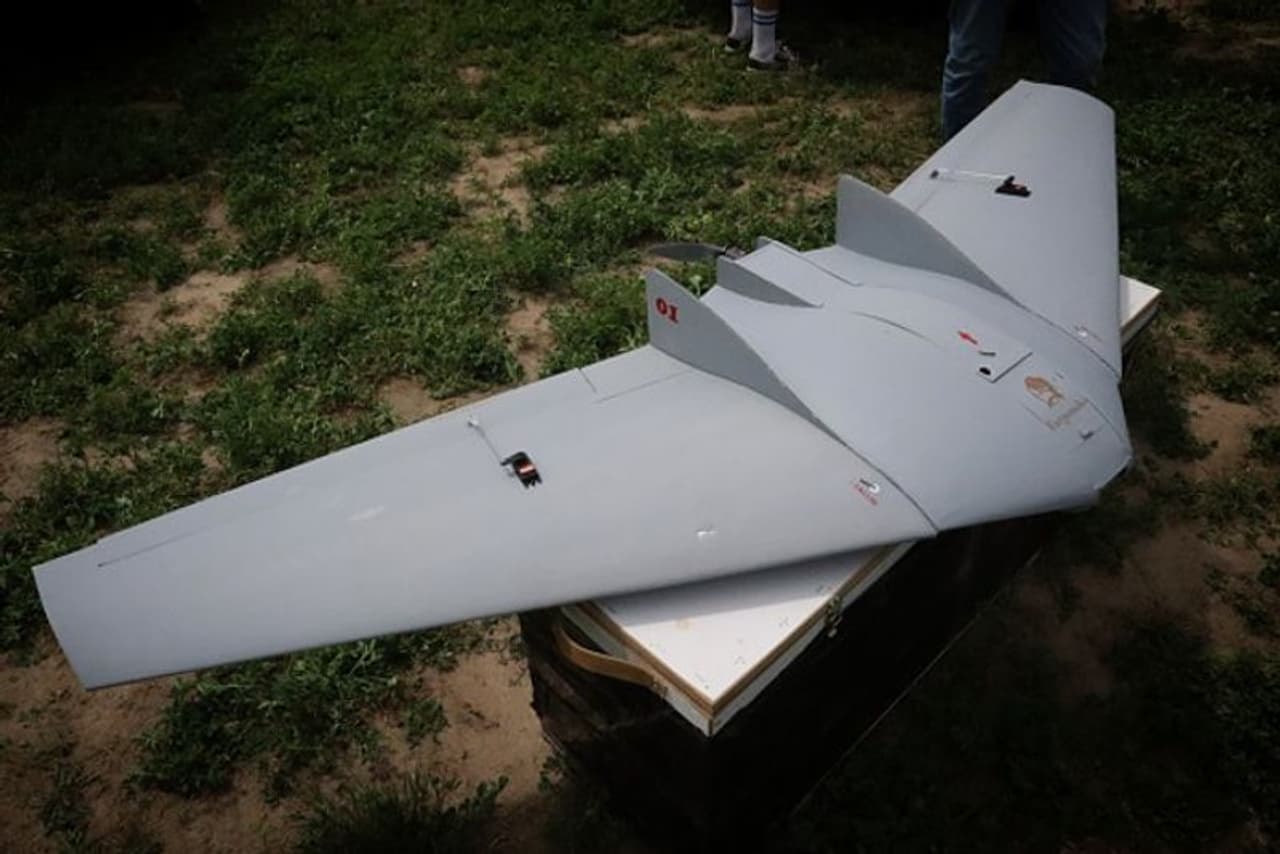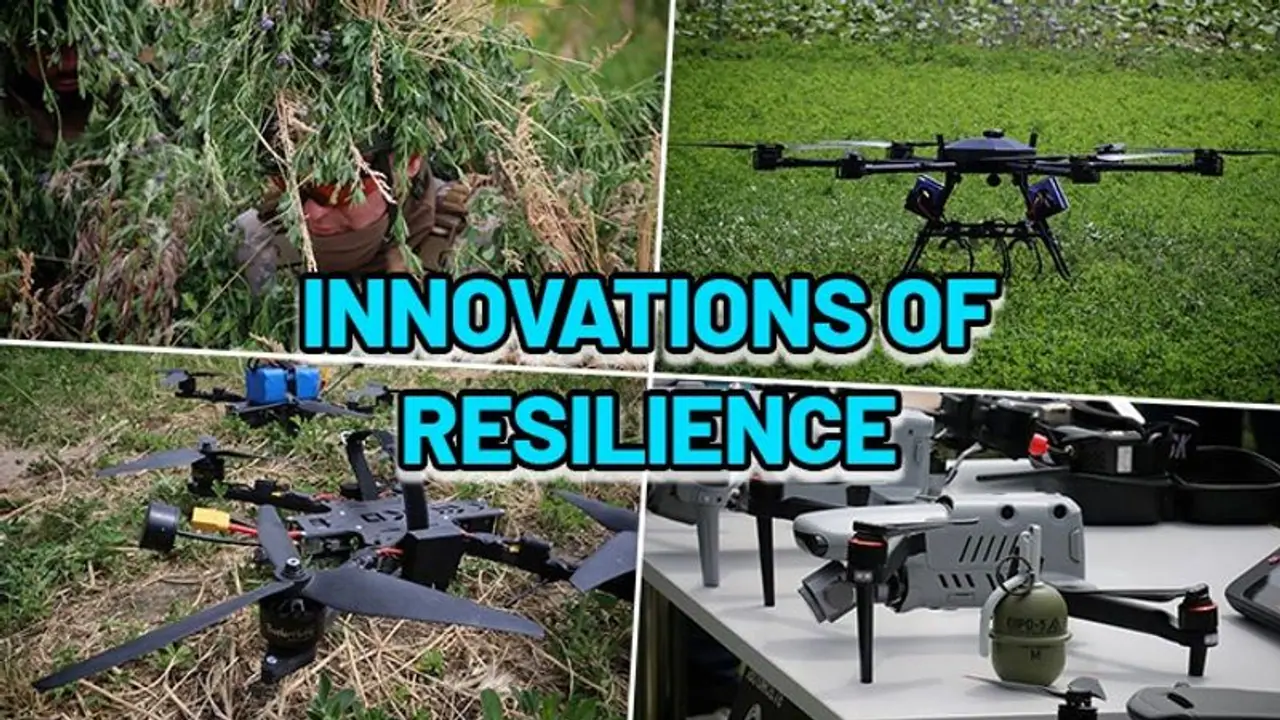From explosive sea drones to grassroots solutions and psychological support, a glimpse into Ukraine's inventive response to conflict challenges.
In Kyiv, a science conference recently unfolded with the anticipated discourse on cutting-edge subjects like artificial intelligence and gene therapy. However, this year's gathering held an unmistakable Ukrainian distinction – the spotlight shone on innovations tailored for the demands of war. Notably, a drone manufacturer renowned for attack drones embarked on a diversification journey, venturing into the realm of unmanned ground combat vehicles. Simultaneously, the Academy of Sciences introduced a prototype underwater robot, meticulously crafted for the purpose of locating and recovering submerged land mines. Amidst this array of military ingenuity, a startup worked diligently on low-cost combat communications, while another focused on a web-based tool designed to identify potential markers of post-traumatic stress disorder (PTSD).

Since the onset of Russia's invasion 18 months ago, Ukraine's resilience, bolstered significantly by NATO-member weaponry, has emerged as a defining hallmark of the ongoing conflict. Yet, amidst the widely recognized narrative of defense, a quietly burgeoning cottage industry of battlefield innovations has been taking shape, slowly but surely showing its potential.
Fueled by a robust scientific foundation inherited from the Soviet era, Ukraine is harnessing its engineering prowess to contribute to the conflict's trajectory.
Explosive sea drones: Ukraine's cutting-edge military innovation
An innovative technology, known as explosive sea drones, has been undergoing significant advancements in Ukraine since the previous year. Over the weekend, the latest versions of these drones achieved a notable feat by successfully targeting and disabling both a Russian warship and an oil tanker in the Black Sea. This achievement followed the triumph of a year-long initiative that played a crucial role in expediting the progress and manufacturing of aerial drones.
To centralize these developments, Ukraine's government took the initiative in April to establish an incubator named Brave 1, dedicated to fostering various forms of military innovation. In a span of four months, the organizers have recorded the registration of approximately 400 projects. Among these, Ukraine's armed forces have meticulously evaluated 186 projects for their potential utility. Notably, 60 projects are centered around robotics, with over 25 focusing on Artificial Intelligence (AI), and around 70 dedicated to the domain of unmanned aerial vehicles (UAVs).
"Our task is to develop military technologies in Ukraine," said Mykhailo Fedorov, Ukraine's minister for digital transformation, who described Brave 1 as the institutionalization of his Army of Drones program. Success ultimately will be judged on how many projects get state contracts, he said.

Ingenious solutions: Meeting specific needs
Amid the varied initiatives, a common theme emerges – a focus on practicality. Himera Tech, for instance, responded to the demand for affordable, jam-resistant radio handsets following Russia's 2022 attack. By maximizing commercially available chips, the company struck a balance between security and cost-effectiveness, ultimately supplying much-needed communication tools to the front lines. It took until April this year for the first units to roll off their production line and about 600 are now in use at the front, co-founder Misha Rudominski noted.
According to Rudominski, the software the business created to maximise performance in commercially available processors is the key to building cheaper. Although radio sets produced with military-grade chips are more secure, they are also more expensive. The cost of equipping up to 250,000 combat forces is too much for Ukraine to bear.
"We wanted to build a solution that is just good enough," Rudominski said at his stall at June's Inscience conference in Kyiv. "This wouldn't defeat US or Chinese electronic warfare systems, but it doesn't need to. We're fighting the Russians."
By the end of the year, Himera Tech hopes to generate 2,000–3,000 units each month. Although the Ukrainian Defence Ministry is not currently a customer, that is the company's end goal. If successful, 10,000 devices may be sold every month, according to the business. According to Rudominski, a model that can compete with military-grade equipment is now being developed.
A grassroots approach to change
Power Kit, a company also based in Kyiv, creates power banks out of abandoned electronic cigarettes. Ivan Volynets, who formed the organization with five other IT professionals, recalled how they asked friends serving on the front lines what they needed during the early days of the Russian invasion. The three main solutions were weaponry, power banks, and night vision.
They created a night vision equipment and gave it to the defence ministry along with its own battery bank. To their amazement, the army requested the power bank since it could recharge all the electronic equipment that front-line soldiers use, such as night-vision equipment, drones, and communications.
According to Volynets, the first Power Kit appeared in May 2022 and was constructed in the hotel kitchen where the team was staying in Lviv, western Ukraine. Since then, they've produced over 2,100 at a cost of roughly $15 each and given them to soldiers without charge.
Before the invasion, Yevhenii Rvachov was an IT specialist using civilian drones in Kharkiv, a city in the north. After co-founding a business, Skylab UA, to create a bomb-dropping quadrocopter—a drone with four rotors—in April of last year, he also sought advice from soldiers. They informed him that in order to make supplying forward positions less risky, they needed ground robots. In order to transport supplies or evacuate injured people, Skylab created the Sirko-S, a remote-controlled go-cart-like carrier with infrared cameras. Each one will cost between $8,000 and $10,000.
According to Rvachov, the $5,000 "Johnny" from the business is a shoebox-sized version that is intended for forward surveillance, kamikaze bombing missions, or to assist emergency services in locating survivors in collapsed structures. According to the organizers, all three goods are registered with Brave 1 and have received grants. At the front, ten quadrocopters are in use.
A company named Citius-S is turning six-wheel-drive transport trucks into armored vehicles to clear land mines and explosive ordnance close to the Polish border. The company claims that the State Emergency Service of Ukraine ordered 33 devices after seeing the prototype in operation last month. The Institute for Problems of Artificial Intelligence at the Ukrainian Academy of Sciences is creating a submersible gadget to locate and recover Russian-left-behind ordinance for underwater mines. According to Sergii Simchenko, a PhD student in physics and math at the institute who is working on the project, a prototype of the cuboid robot has just started tests of its electronic systems.

From battlefield to beyond: Versatile adaptations
Not all innovations are rooted in weaponry. The Bohun amphibious all-terrain vehicle, originally designed for civilian use, exemplifies adaptability. Since the Russian invasion, many of them that were originally intended for Ukrainian hunters and fishers have been converted for military use and deployed to the front. Six of the more recent Bohun-2 models, however, were also modified in June to assist in the evacuation of flood victims in the area of Kherson after a dam on the enormous Dnipro River in Ukraine was destroyed. Outside the cabins, lights and loudspeakers were installed, along with extra batteries, foldable seats, and metal stretchers that could be attached to helicopters.
Addressing mental health amidst strain
Beyond the physical battlefield, innovators are tackling psychological warfare. Anima, for instance, has developed software utilizing image-based tests to gauge depression and anxiety levels. Designed to aid in diagnosing battle stress and preventing PTSD, this program showcases Ukraine's commitment to addressing the multifaceted challenges brought about by conflict.
It employs a webcam that tracks eye movement to offer objectivity while it administers an image-based test to gauge degrees of anxiety and despair. In the test, participants are asked to see a succession of trigger images, including ones of snakes, spiders, and dismembered bodies, each displayed on a split screen with more emotionally neutral options to the right and left. The important thing is how the subjects react; some turn their heads away to escape the danger signs, while others can't keep their eyes off them.
Ukraine's blend of scientific heritage and entrepreneurial spirit is yielding an array of solutions that collectively hold the potential to make a difference on the battlefield. While each innovation may be a small piece of the puzzle, their combined impact could prove pivotal in shaping the conflict's trajectory and Ukraine's response to it.
